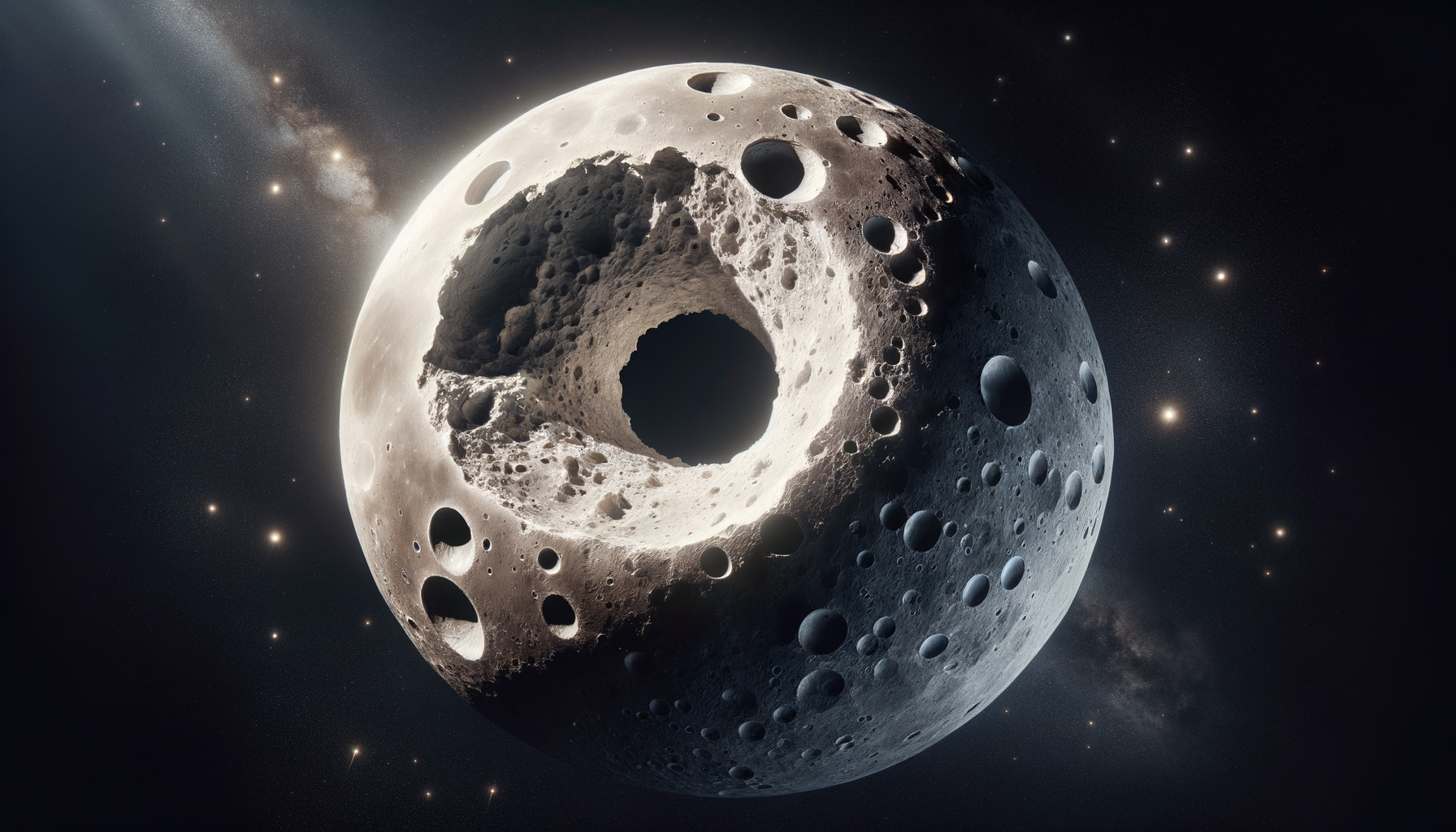What if We Actually Drilled a Hole Through the Moon?
What if we drilled a hole through the moon?👇

Introduction to the Moon’s Mysteries
The Moon has fascinated humanity for centuries, serving as a source of inspiration for myths, scientific inquiry, and a symbol of the unknown. As the Earth’s only natural satellite, its influence on our planet is profound, affecting tides, stabilizing the Earth’s axial tilt, and even playing a role in the evolution of life. But what if we took a bold step and drilled a hole right through it? This thought experiment invites us to consider the Moon’s composition, its structural integrity, and the potential consequences of such an unprecedented action.
The Moon’s Composition and Structure
Understanding the Moon’s composition is crucial before considering any drastic actions. The Moon is primarily composed of silicate minerals, similar to those found on Earth, but with notable differences. The surface, known as the crust, is rich in oxygen, silicon, magnesium, iron, calcium, and aluminum. Beneath the crust lies the mantle, which is believed to be composed of olivine and orthopyroxene minerals. At the core, scientists speculate the presence of iron, nickel, and sulfur.
Drilling through the Moon would require penetrating these layers, each with unique characteristics. The crust is relatively thin, averaging about 50 kilometers, but the mantle extends much deeper, up to 1,000 kilometers. The core, though small compared to Earth’s, poses additional challenges due to its density and composition. This drilling endeavor would not only be a technical feat but also an opportunity to learn more about the Moon’s geological history.
Technical Challenges of Drilling
The concept of drilling through the Moon is not just a scientific curiosity; it presents significant engineering challenges. The Moon’s surface conditions, including low gravity, extreme temperature variations, and lack of atmosphere, complicate any drilling operation. Equipment would need to be specially designed to withstand these harsh conditions while maintaining functionality.
Moreover, transporting the necessary machinery and materials from Earth to the Moon would be a logistical challenge. Current space travel capabilities would need significant advancements to support such an ambitious project. Additionally, ensuring the safety of personnel involved in the drilling operation would be paramount, requiring robust life support systems and emergency protocols.
Potential Impacts on Earth and the Moon
Drilling a hole through the Moon could have unforeseen consequences for both the Moon and Earth. The Moon’s gravitational influence on Earth is vital for maintaining tidal patterns and stabilizing the planet’s axial tilt. Altering its structure could disrupt these natural processes, potentially affecting ecosystems and climate patterns on Earth.
On the Moon itself, drilling could trigger seismic activity, leading to surface instability. The release of gases trapped beneath the surface might also alter the Moon’s tenuous exosphere. These changes could impact future lunar exploration and habitation plans, emphasizing the need for thorough risk assessments before undertaking such a project.
Ethical and Scientific Considerations
Beyond the technical and environmental aspects, drilling through the Moon raises ethical and scientific questions. The Moon is a shared heritage of humanity, protected by international treaties that emphasize its use for peaceful purposes. Any alteration to its structure should be carefully weighed against the potential benefits and risks.
Scientifically, the endeavor could yield valuable insights into planetary formation and the history of our solar system. However, it also poses the risk of permanently altering a natural body that has been a constant in human history. Balancing scientific curiosity with preservation is a challenge that requires global cooperation and thoughtful deliberation.
Conclusion: Weighing the Risks and Rewards
While the idea of drilling a hole through the Moon is intriguing, it is fraught with challenges and potential consequences. From technical hurdles to environmental impacts, and ethical considerations, the decision to undertake such a project requires careful deliberation. As we continue to explore the Moon and its mysteries, we must balance our thirst for knowledge with the responsibility to preserve our celestial neighbor. Ultimately, the Moon’s role as a beacon of inspiration and a scientific frontier should guide our actions as stewards of the cosmos.